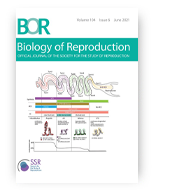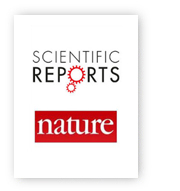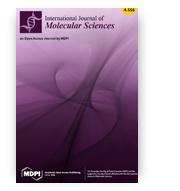Characterization and biological role of cysteine-rich venom protein belonging to CRISPs from turkey seminal plasma
Mariola Słowińska, Laura Pardyak, Ewa Liszewska, Sylwia Judycka, Joanna Bukowska, M.A. Dietrich, Łukasz Paukszto, Jan Jastrzębski, Krzysztof Kozłowski, Artur Kowalczyk, Jan Jankowski, Barbara Bilińska, Andrzej Ciereszko
Biology of Reproduction
 Turkey semen contains cysteine-rich secretory proteins (CRISPs) that belong to the dominant seminal plasma proteins. We aimed to isolate and characterize CRISP from turkey seminal plasma and evaluate its possible involvement in yellow semen syndrome (YSS). YSS, which is well characterized, causes reduced fertility and hatchability. The protein was purified using hydrophobic interaction, gel filtration, and reverse phase chromatography. It then was subjected to identification by mass spectrometry, analysis of physicochemical properties, and specific antibody production. The biological function of the isolated protein was tested and included its effects on sperm motility and migration and sperm-egg interactions. Sperm motility was measured with the CASA system using Hobson Sperm Tracker. The reproductive tract of turkey toms was analyzed for gene expression; immunohistochemistry was used for protein localization in the male reproductive tract, spermatozoa, and inner perivitelline layer. The isolated protein was identified as cysteine-rich venom protein-like isoform X2 (CRVP X2; XP_010706464.1) and contained feature motifs of CRISP family proteins. Turkey CRVP X2 was present in both spermatozoa and seminal plasma. The extensive secretion of CRVP X2 by the epithelial cells of the epididymis and ductus deferens suggests its involvement in post-testicular sperm maturation. The internally localized CRVP X2 in the proximal part of the sperm tail might be responsible for stimulation of sperm motility. CRVP X2 on the sperm head might be involved in several events prior to fusion and may also participate in gamete fusion itself. Although the mechanisms by which CRVP X2 mediates fertilization are still unknown, the involvement of complementary sites cannot be excluded. The disturbance of CRVP X2 expression can serve as an etiologic factor of YSS in the turkey. This study expands the understanding of the detailed mechanism of fertilization in birds by clarifying the specific role of CRVP X2.
Turkey semen contains cysteine-rich secretory proteins (CRISPs) that belong to the dominant seminal plasma proteins. We aimed to isolate and characterize CRISP from turkey seminal plasma and evaluate its possible involvement in yellow semen syndrome (YSS). YSS, which is well characterized, causes reduced fertility and hatchability. The protein was purified using hydrophobic interaction, gel filtration, and reverse phase chromatography. It then was subjected to identification by mass spectrometry, analysis of physicochemical properties, and specific antibody production. The biological function of the isolated protein was tested and included its effects on sperm motility and migration and sperm-egg interactions. Sperm motility was measured with the CASA system using Hobson Sperm Tracker. The reproductive tract of turkey toms was analyzed for gene expression; immunohistochemistry was used for protein localization in the male reproductive tract, spermatozoa, and inner perivitelline layer. The isolated protein was identified as cysteine-rich venom protein-like isoform X2 (CRVP X2; XP_010706464.1) and contained feature motifs of CRISP family proteins. Turkey CRVP X2 was present in both spermatozoa and seminal plasma. The extensive secretion of CRVP X2 by the epithelial cells of the epididymis and ductus deferens suggests its involvement in post-testicular sperm maturation. The internally localized CRVP X2 in the proximal part of the sperm tail might be responsible for stimulation of sperm motility. CRVP X2 on the sperm head might be involved in several events prior to fusion and may also participate in gamete fusion itself. Although the mechanisms by which CRVP X2 mediates fertilization are still unknown, the involvement of complementary sites cannot be excluded. The disturbance of CRVP X2 expression can serve as an etiologic factor of YSS in the turkey. This study expands the understanding of the detailed mechanism of fertilization in birds by clarifying the specific role of CRVP X2.
DOI:10.1093/biolre/ioab032
Psychosocial stress and cortisol stress reactivity predict breast milk composition
Anna Ziomkiewicz, Magdalena Babiszewska, Anna Apanasewicz, Magdalena Piosek, Patrycja Wychowaniec, Agnieszka Cierniak, Olga Barbarska, Marek Szołtysik, Dariusz Danel, Szymon Wichary
Scientific Reports
 We studied a sample of 146 Polish, exclusively breastfeeding mothers and their healthy born on time infants to explore the effect of perinatal psychosocial stress on breast milk composition. Maternal perinatal stress was assessed using Recent Life Changes Questionnaire summarizing stressful events from the previous six months. Stress reactivity was determined by administering the cold pressor test and measuring cortisol in saliva samples taken during the test. Breast milk sample was taken to measure energy, protein, fat, lactose, and fatty acid content. Analyses revealed that stress reactivity was positively associated with milk fat and long-chain unsaturated fatty acids and negatively associated with milk lactose. Perinatal psychosocial stress negatively affected energy density, fat as well as medium-chain and long-chain saturated fatty acids in milk. These results, together with previous studies, advocate monitoring maternal psychological status during the peripartum to promote breastfeeding and healthy infant nutrition.
We studied a sample of 146 Polish, exclusively breastfeeding mothers and their healthy born on time infants to explore the effect of perinatal psychosocial stress on breast milk composition. Maternal perinatal stress was assessed using Recent Life Changes Questionnaire summarizing stressful events from the previous six months. Stress reactivity was determined by administering the cold pressor test and measuring cortisol in saliva samples taken during the test. Breast milk sample was taken to measure energy, protein, fat, lactose, and fatty acid content. Analyses revealed that stress reactivity was positively associated with milk fat and long-chain unsaturated fatty acids and negatively associated with milk lactose. Perinatal psychosocial stress negatively affected energy density, fat as well as medium-chain and long-chain saturated fatty acids in milk. These results, together with previous studies, advocate monitoring maternal psychological status during the peripartum to promote breastfeeding and healthy infant nutrition.
DOI:10.1038/s41598-021-90980-3
The Co-Culture of Staphylococcal Biofilm and Fibroblast Cell Line: The Correlation of Biological Phenomena with Metabolic NMR1 Footprint
Joanna Czajkowska, Adam Junka, Jakub Hoppe, Monika Toporkiewicz, Andrzej Pawlak, Paweł Migdał, Monika Oleksy-Wawrzyniak, Karol Fijałkowski, Marcin Śmiglak, Agata Markowska-Szczupak
International Journal of Molecular Sciences
 Staphylococcus aureus is one of the most prevalent pathogens associated with several types of biofilm-based infections, including infections of chronic wounds. Mature staphylococcal biofilm is extremely hard to eradicate from a wound and displays a high tendency to induce recurring infections. Therefore, in the present study, we aimed to investigate in vitro the interaction between S. aureus biofilm and fibroblast cells searching for metabolites that could be considered as potential biomarkers of critical colonization and infection. Utilizing advanced microscopy and microbiological methods to examine biofilm formation and the staphylococcal infection process, we were able to distinguish 4 phases of biofilm development. The analysis of staphylococcal biofilm influence on the viability of fibroblasts allowed us to pinpoint the moment of critical colonization—12 h post contamination. Based on the obtained model we performed a metabolomics analysis by 1H NMR spectroscopy to provide new insights into the pathophysiology of infection. We identified a set of metabolites related to the switch to anaerobic metabolism that was characteristic for staphylococcal biofilm co-cultured with fibroblast cells. The data presented in this study may be thus considered a noteworthy but preliminary step in the direction of developing a new, NMR-based tool for rapid diagnosing of infection in a chronic wound.
Staphylococcus aureus is one of the most prevalent pathogens associated with several types of biofilm-based infections, including infections of chronic wounds. Mature staphylococcal biofilm is extremely hard to eradicate from a wound and displays a high tendency to induce recurring infections. Therefore, in the present study, we aimed to investigate in vitro the interaction between S. aureus biofilm and fibroblast cells searching for metabolites that could be considered as potential biomarkers of critical colonization and infection. Utilizing advanced microscopy and microbiological methods to examine biofilm formation and the staphylococcal infection process, we were able to distinguish 4 phases of biofilm development. The analysis of staphylococcal biofilm influence on the viability of fibroblasts allowed us to pinpoint the moment of critical colonization—12 h post contamination. Based on the obtained model we performed a metabolomics analysis by 1H NMR spectroscopy to provide new insights into the pathophysiology of infection. We identified a set of metabolites related to the switch to anaerobic metabolism that was characteristic for staphylococcal biofilm co-cultured with fibroblast cells. The data presented in this study may be thus considered a noteworthy but preliminary step in the direction of developing a new, NMR-based tool for rapid diagnosing of infection in a chronic wound.
DOI:10.3390/ijms22115826









